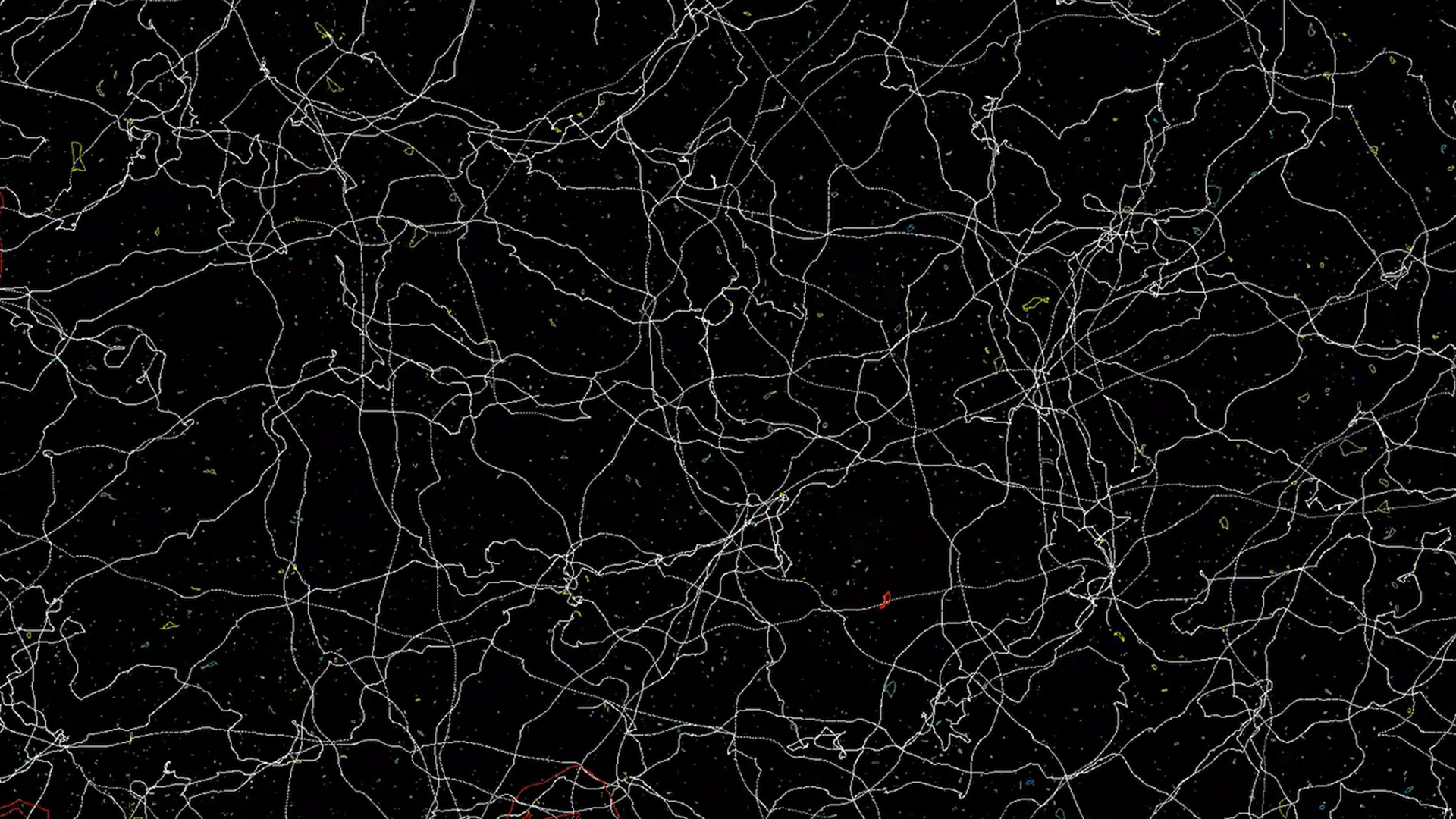
How do you cut a quantum string the size of the universe? New research shows how the chaos of the Big Bang could have done it, and how those cuts could have led to a cosmos filled with rippling gravitational waves.
Cosmic strings are the hypothetical leftovers from the earliest moments of the universe. Within the first second of the Big Bang, the cosmos underwent several intense rounds of phase transitions as the forces of nature split off from each other. Many cosmologists believe that these transitions were far from perfect and that each one left behind flaws in space-time itself.
These defects could have taken on a variety of shapes and properties, depending on the details of the (largely unknown and complicated) physics happening in those early days. Cosmic strings are likely one of the most common of these defects, and if they exist, they would manifest as truly exotic objects. They would have thicknesses no wider than a proton, would stretch from one end of the universe to the other, and would be so dense that a mile of string would outweigh the entire Earth.
They would also be nearly indestructible. Before the new research, which has not been submitted for peer review yet, scientists believed cosmic strings were stable. Once cosmic strings formed, they simply existed, from the earliest moments of the Big Bang all the way to the present day. The only way to diminish a cosmic string would be if two of them intersected, or if one looped over on itself. Once that happened, the ensuing vibrations would force the cosmic string to decay into a shower of particles and high-energy radiation.
But no such signals from cosmic strings have ever been found, and to date, astronomers have uncovered no evidence of their existence. This presents a challenge for cosmology, because many models of the early universe predict the existence of cosmic strings. So, if quantum strings were made in abundance during the Big Bang, where did they all go?
Perhaps the cosmic strings are not as stable as we once thought, according to the new study, led by researchers from the Kavli Institute for the Physics and Mathematics of the Universe in Japan. Instead of being stable, the strings might be "metastable." Metastability is a phenomenon found throughout the physical world and occurs when a system can find itself in a stable position and remain there for an indefinite amount of time, but any shift from that position will cause the system to find a new arrangement.
As an example, imagine tumbling down the side of a hill — a very dynamic, unstable situation. If you come to a temporary stop in a divot on the side of the hill, you are now metastable. If nothing disturbs you, you can stay in that divot forever. But if someone nudges you, you will fall out of the divot and continue falling down the hill.
The researchers found that other exotic entities, known as magnetic monopoles, can destabilize a cosmic string. Magnetic monopoles — pure-north or pure-south magnetic particles — can also be created during the phase transitions of the early universe. Near cosmic strings, monopoles can form with anti-monopoles and then promptly annihilate each other. The energy released can snip a cosmic string in half, triggering a destabilization process that forces the cosmic string to eventually dissolve, according to the study authors.
As the cosmic string dissolves, it vibrates, and that vibration can trigger the formation of gravitational waves. Thus, there may not be many cosmic strings left in the universe, explaining why we haven't found any so far — but their gravitational signals may remain.
Indeed, the researchers pointed to the recent discovery of a background of gravitational waves as the possible signal of these metastable cosmic strings. Astronomers will need to study the background waves in more detail to determine if cosmic strings or some other source, like colliding black holes, is responsible for the faint, universe-spanning vibrations.







